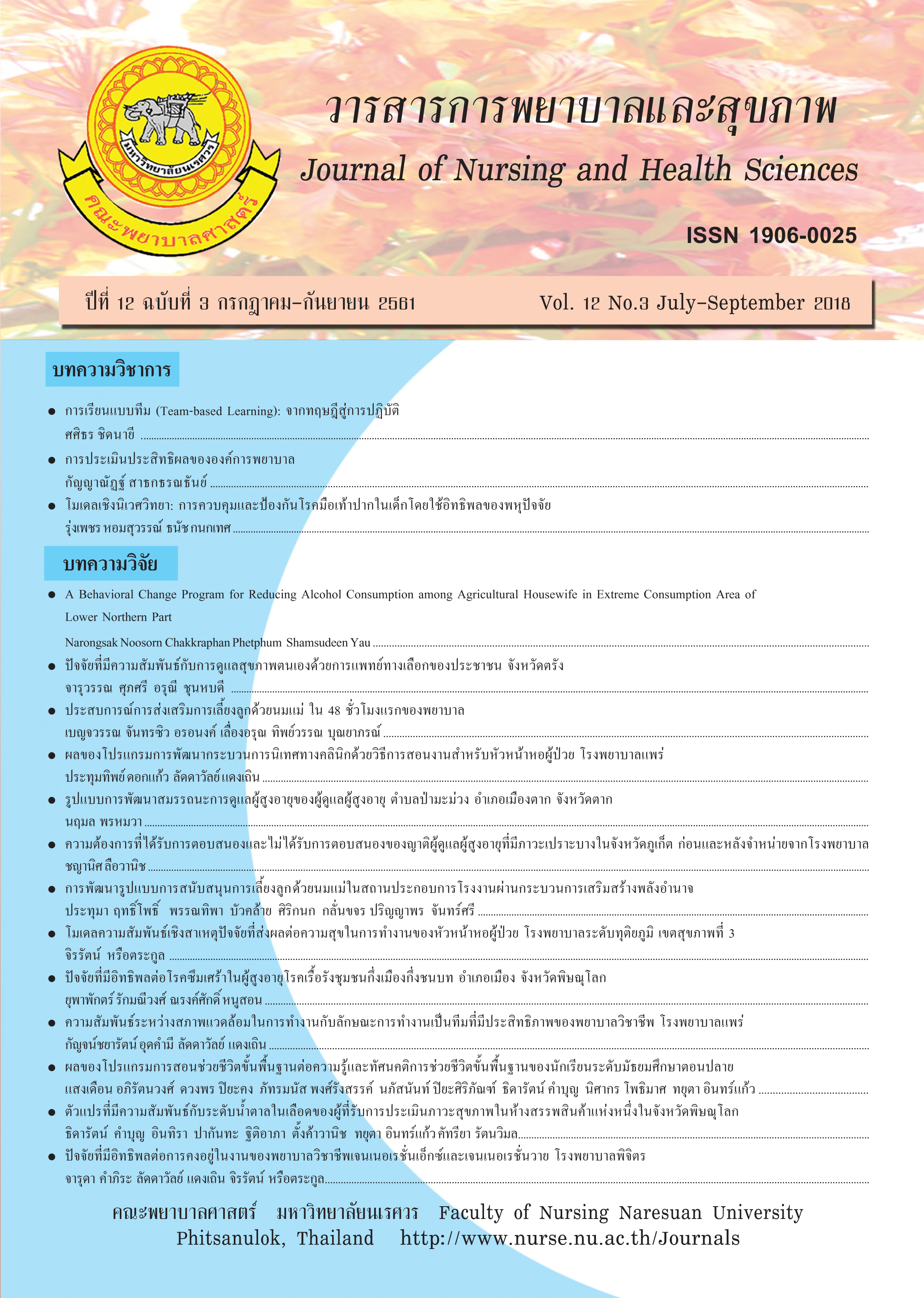Team-based Learning: From Theory to Practice
Main Article Content
Abstract
Team-based learning (TBL) is an active teaching strategy, focus on students learning through their collaboration process in large classes, which have the higher ratio between teacher and students. There are four essential elements of TBL. 1) properly formed and managed team formation, 2) accountability: individual and group work, 3) frequent immediate student feedback and, 4) assignments that promote both learning and team development. The learning process is composed ofthreephrases: phrase I: preparation, students should be responsibility their assignments. This stage has importance to promote the effective learning, phrase II: Readiness AssuranceProcess (RAP), students collaborate to learn in course contents. This process is to ensure that students have enough knowledge to tackle the higher-order problem in phrase III, and phrase III Application phrase, is the most important process which students present with higher-order application exercise. They make a decision to solve problem through application of course concepts.The role of instructor in TBL is facilitator and content expert. TBL promotes the essential skills for health care providers such as team work, communication, problem solving and critical thinking.
Article Details
References
W.T. (2016). Using team-based learning in
a large interprofessional health science
education experience. Journal of Inter professional
Education & Practice,5, 19-22.
Chidnayee, S.&Lortamma,P. (2011). Effect of team
based learning in Nursing Care of Persons
with Gastrointestinal Problem on learning
achievements, critical thinking and problem
solving in nursing students. Borommarajonani
College of Nursing, Uttaradit.
Espey,M. (2017). Enhancing critical thinking using
team-based learning. Higher Education
Research & Development, http://dx.doi.org/
10.1080/07294360.2017.1344196
Freeman S, Eddy SL, McDonough M, Smith MK,
Okoroafor N, JordtH, WenderothMP. (2014).
Active learning increases student performance
inscience, engineering and mathematics.
Proceedings of the National Academy of
Sciences of the United States of America,111,
8410-8415.doi: 10.1073/pnas.1319030111
Kibble,JD.,Bellew, C., Asmar A., & Barkley, L. (2016).
Team-based learning in large enrollment
classes. Advances in Physiology Education.
The American Physiological Society,40,
435-442. doi:10.1152/advan.00095.2016. http:/
/advan.physiology.org
Michaelsen, L.K. (2004). Getting started with team
learning.In L.K. Michaelsen, AB.Knight, L.D.,
Fink. (Eds). Team-Based learning, A transformative
use of small groups in college teaching.
(pp 27-50). Sterling, VA: Stylus.
Michaelsen, L., Sweet, M. &Parmalee, D. (2009).
Team-Based Learning: Small Group Learning's
Next Big Step. New Directions in Teaching
and Learning, 7-27.
Michaelsen, L. K., Watson, W. E. & Black, R. H.
(1989). A realistic test of individual versus
group consensus decision making. Journal of
Applied Psychology. 74(5), 834-839. http://
dx.doi.org/10.1037/0021-9010.74.5.834
Sirirat,N.&Chidnayee,S. (2009). Effect of Teambased
learning in Nursing Care of Persons
with Health Problems 1 on achievements and
critical thinking in nursing students. Journal
of Health Science, 3(2),32-40. (In Thai)
Thailand 4.0.(n.d.)Retrieved May 2, 2017, from Royal
Thai Embassy, Washington D.C. website,
http://thaiembdc.org/thailand-4-0-2/


